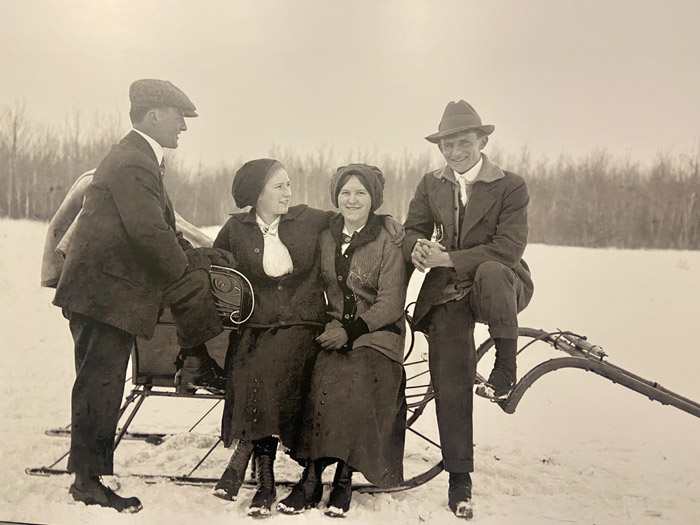Village News
What to Do?

March is a month of transition with limited options of outdoor activity. There is not much one can do with melting snow but wait and watch. But why do that when you can check out Mennonite Heritage Village’s (MHV) new ‘Mennonite Village Photography’ exhibit instead!
This collection of never-before-see photographs left behind by four Manitoba Mennonite photographers is stunning and will make you feel like you are in a different world. The super-sized quality photos provide a clear view into Mennonite life and early settlement in Manitoba.
One of the photographers is Heinrich (Henry) D. Fast. Fast was born in Gruenfeld (later called Kleefeld) in the Mennonite East Reserve and grew up in a household that celebrated innovation and invention. The family business, H. L. Fast & Sons, was especially renowned for manufacturing self-propelled mowers and Manitoba’s first ditch-digging machine. Henry D. Fast began photography as a young man and used a medium format Kodak Box camera from 1909. Many of the images in his collection show that blacksmithing and mechanics were central to his daily life. Fast’s collection also includes family and individual portraits, community gatherings, the spontaneous play of youth, and a certain degree of experimentation, featuring some unique and intentional double-exposure shots. Fast was encouraged by the church to give up photography when he married Helena Schellenberg in 1918. Though he obliged, he passed along the camera to his bachelor brother, Jake D. Fast. Years later, Henry D. Fast’s son would become the world-renowned wildlife photographer Dennis Fast.
Peter H. Klippenstein is another avid photographer and was a farmer and woodworker who lived most of his life in the creek-side village of Altbergthal on the Mennonite West Reserve. He married Maria Dyck in 1900. The couple had thirteen children, though only ten lived into adulthood. Klippenstein left behind hundreds of film and glass negatives.
“Buffalo Creek appears often in Klippenstein’s photographs, a topography which makes them stand out among the other images in this exhibit. Albergthal is situated along the eastern bank of Buffalo Creek, one of very few bodies of water on the West Reserve. The creek ensured the distinctiveness of early Mennonite village life in Altbergthal: opportunities for boating, ice-skating, hockey, sledding, trapping, and hunting waterfowl were close at hand” (Mennonite Village Photography, ed. Susie Fisher).
This exhibition was created by the Mennonite Historic Arts Committee along with a large format book, available for purchase at MHV’s Village Gifts & Books, featuring over 100 photographs by the four photographers. The Mennonite Historic Arts Committee is committed to the preservation, publication, and exhibition of historic Mennonite art forms.




